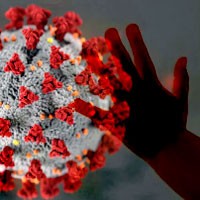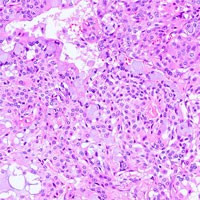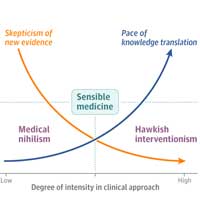Tag: research

From the Exposome to the Socioexposome in COVID-19 Research
The coronavirus disease 2019 (COVID-19) pandemic continues to expose how access to health care and delivery of care are important concerns, second only to the primary concern regarding exposure to the severe acute respiratory... read more

ICU Delirium-Prediction Models: A Systematic Review
Although most ICU delirium-prediction models have relatively good performance, they have limited applicability to clinical practice. Most models were static, making predictions based on data collected at a single time-point,... read more

The voice of people living with COPD: what I learned from doing qualitative research
As a general respiratory physician, schooled in the clinical world of evidence-based medicine (EBM), I shared a common view that qualitative research was, well, flaky. Where was the science? The statistical significance?... read more

Changes in Drug List Prices and Amounts Paid by Patients and Insurers
In this cross-sectional study, we found that increases in drug wholesale list prices are associated with increases in net patient out-of-pocket costs and insurer payments. This finding suggests that, although discounts and... read more

Response to optic nerve sheath diameter guided detection of sepsis associated encephalopathy
regarding the blind method, being uninformed of the clinical diagnoses of patients is unavailing, since clues will still be found in patients' clinical manifestations. Therefore, two trained physicians in intensive ultrasound... read more

Caring for the Sickest COVID-19 Patients: An ICU Story
In an article for the latest issue of Stanford Medicine magazine, I provide a glimpse into the journey Free and his front-line Stanford Health Care colleagues took -- from Day 1 through the following weeks and months -- to... read more

Expert Consensus on Methodology for Conducting and Reporting Echocardiography Research Studies
Echocardiography is a common tool for cardiac and hemodynamic assessments in critical care research. However, interpretation (and applications) of results and between-study comparisons are often difficult due to the lack... read more

Prior Routine Use of NSAIDs and Important Outcomes in Hospitalised COVID-19 Patients
Coronavirus disease 2019 (COVID-19) infection causes acute lung injury, resulting from aggressive inflammation initiated by viral replication. There has been much speculation about the potential role of non-steroidal inflammatory... read more

Resilience in a Prehospital Setting – A New Focus for Future Research?
Empirical research is of crucial importance to understand, build and support resilient systems and processes, including exploring and developing interventions to improve capacity for adaptive change in a prehospital setting. Handling... read more

The Use of Venous Doppler to Predict Adverse Kidney Events in a General ICU Cohort
This study indicates that portal and hepatic flows may be clinical useful tools to help identify patients at risk for renal injury. It is likely that they are indicative of elevated right atrial pressure causing venous congestion,... read more

Lung Histopathology in COVID-19 as Compared to SARS and H1N1 Influenza
Diffuse alveolar damage (DAD) was reported in 88% of patients with COVID-19. This is similar to both H1N1 (90%) and SARS (98%). Pulmonary microthrombi was reported in 57% of patients with COVID-19. This was similar to... read more

Cancer Biomarker Measurement using a Smartphone
Canadian researchers create technology that reads cancer biomarker like a blood-sugar monitor. Researchers at the Canadian McMaster and Brock universities have created the prototype for a smartphone device to measure a biomarker... read more

Balancing Intervention and Inaction During the COVID-19 Pandemic
More than 38 million people worldwide have been infected with the severe acute respiratory syndrome (SARS) coronavirus 2, creating intense pressure on clinicians to offer state-of-the-art, life-saving treatment to patients. The... read more

High Plasma Levels Linked to Severe ARDS in Children with Respiratory Failure
Elevated surfactant protein D levels are associated with severe acute respiratory distress syndrome and poor outcomes in children with acute respiratory failure, according to results published in Chest. Elevated surfactant... read more








